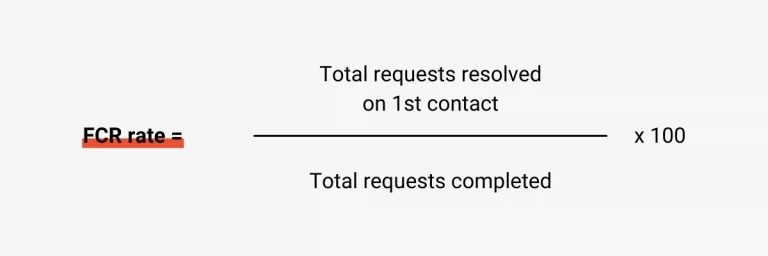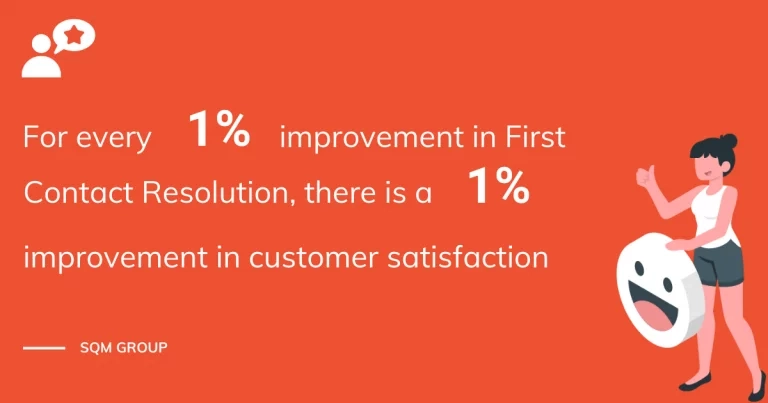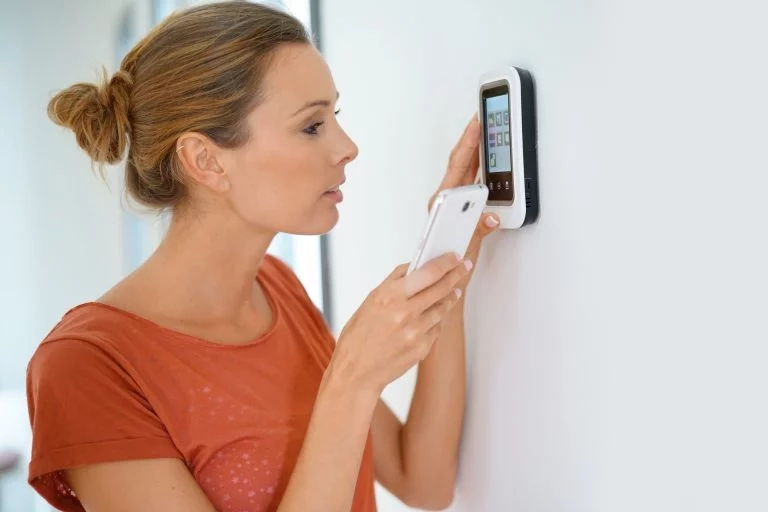Why is the first contact resolution rate important
for customer relations?



Satisfaction is the number one issue for customer services and is at the heart of all concerns. Today, a company’s success is not only based on the products or services it sells, but also on the experiences it delivers to its customers. To optimize these services and to ensure their efficiency, companies use many indicators (KPI). Among these, we often find the NPS (Net Promoter Score), the CSAT (Customer Satisfaction) or the CES (Customer Effort Score) which aim to give indications on the level of satisfaction of a company’s customers. But there are others such as the First Contact Resolution (FCR) which measures the quality of the customer service, the efficiency of the call center and the resolution processes of the requests from the first contact. In this article, we propose to discover the first contact resolution rate, its importance for customer satisfaction and how to improve it with visual assistance.
First Contact Resolution (FCR) is a key performance indicator, particularly for support or customer relations centers. This indicator represents the proportion of requests resolved at the first contact with the customer, i.e., at the first call if it is a voice contact, at the first e-mail if it arrives by this channel, at the first chat session, etc. Requests that do not require a second contact or follow-up are considered resolved. In addition, a request that is forwarded to another agent in the support center is always considered a first contact resolution if the situation is resolved before the customer hangs up or disconnects from the chat.
The first contact resolution rate is usually expressed as a percentage and measures the success rate of a company in responding and resolving customer support requests on the first call. This rate is used to evaluate the satisfaction of a company’s customers as well as the performance of the support team.
How is it measured?
The FCR rate is calculated as the total number of requests resolved on first contact divided by the total number of requests over a given period.

There are different ways to measure it, but the most reliable method is to ask customers directly about their problem resolution. It is recommended to include two questions in a post-interaction satisfaction survey.
If the client answers “yes” to both questions, then it can be called first contact resolution. On the other hand, a negative response to either question means that the customer’s request was not resolved at the first contact.
There are other ways to measure it. For example, many companies consider that if the customer hasn’t called back to support within a certain time frame, then that means their issue has been resolved. According to a study conducted by Call Centre Helper, this is the most common method used by companies (28%) to determine the FCR rate.
First contact resolution is beneficial to both the customer and the company. When a customer encounters a problem, he or she wants it resolved without delay. Indeed, a customer sees his problem as a priority and wants the company to consider it as such. So, if the company manages to solve the problem quickly, the customer is satisfied. On the company’s side, first contact resolution saves time. Agents face fewer callbacks from customers and can focus on helping other customers. Agents are also more satisfied because they feel they have met customer expectations. Overall, FCR is a critical metric because it measures both quality and operational efficiency.
Today, many companies do not measure this indicator. In a study conducted by Akio, only 14% of the companies surveyed had implemented first contact resolution. However, when given importance, this KPI proves to be very useful for:
Many people are apprehensive about contacting a customer service. There are many reasons for this: long waiting time on the phone, chatbot that does not understand what the person is looking for, lack of response from the customer service, difficulty in explaining the problem and in some cases having to rephrase it to a new interlocutor, etc. Between waste of time and weariness, a customer can quickly decide to change brands. The Akio study confirms this, as 70% of consumers would be ready to change supplier or brand if they did not get a satisfactory answer from the first contact. First contact resolution, by reducing customer effort, increases customer satisfaction and loyalty. A study conducted by SQM Group reports that a 1% improvement in the FCR rate leads to a 1% improvement in customer satisfaction. On the other hand, the same study shows that on average, customer satisfaction drops by 15% when a customer calls back for the same problem.

When a customer contacts a support center with a problem or complaint, he is usually in a state of annoyance or even dissatisfaction. He considers this call a waste of time and seeks to shorten the time. If a company succeeds in resolving the problem on the first call, then the customer is relieved and satisfied. In addition, meeting its expectations (in terms of problem resolution and timeframe) leads the customer to have a good image of the company’s customer service.

With a high first contact resolution rate, agents no longer need to handle the same customer request multiple times. This saves time and allows them to focus on other cases, which is a real source of satisfaction for them. In addition, when collaborators are satisfied, we generally observe a better productivity. The study conducted by SQM Group shows that 1% improvement in the FCR results in a 1 to 5% increase in collaborator satisfaction.
The FCR reduces the number of repeat contacts, the average processing time and therefore expenses. Each call received represents a cost for customer service. Therefore, handling the same requests several times significantly increases support management costs. According to SQM Group, a 1% improvement in the FCR rate results in a 1% decrease in operational costs.
First contact resolution can help sell more easily since a satisfied customer will be inclined to repeat the purchase. A Salesforce study found that 91% of customers say they are more likely to make additional purchases following a positive service experience.
First contact resolution can also help a company to implement a cross-selling strategy. This consists in offering a complementary product or service to a customer during a purchase in order to increase its average basket. According to SQM Group, when a request is resolved at the first contact, the acceptance rate of a cross-sell increases by 20%.
Visual assistance has experienced a considerable boom during the epidemic crisis. It is an ideal solution for handling remote situations such as diagnosis, troubleshooting, inspection, etc. Remote visual assistance offers many advantages to companies that use it: reduced travel, time savings, faster resolution time, customer satisfaction, etc.
In the context of customer relations, visual assistance refers to the use of video conferencing by a customer support. It is used so that the agent can see in real time the product that is causing the customer a problem.
It is often difficult to explain the problem we are facing by phone, email, or chat. This difficulty in putting words to a situation can lead to feelings of frustration or annoyance. Frequently, this leads to a failure to resolve the problem. The use of visual assistance in these moments is ideal since the customer does not need to find the right words, but only to show the product. This allows agents and customers to communicate easily for a faster resolution of the situation.

Customer satisfaction is one of the most important issues for companies. Just like the first call resolution rate, visual assistance helps improve customer satisfaction. By integrating remote assistance to your customer service, you will increase your FCR rate.
In concrete terms, when a customer contacts an after-sales service, he or she seeks to resolve the problem as quickly as possible. In the same way, the advisor seeks to satisfy the customer by providing a solution at the first contact. The use of real-time video allows the agent to determine the problem immediately (defective product, improper use of the product, poor installation, etc.). In addition, it is common for a customer to think that their product is broken, when maintenance tips are all that is needed to solve the problem. In these situations, support requests can be resolved remotely on the first call with the agent’s advice.
The company manufactures and sells printing equipment for the graphic arts industry. Heidelberg France chose to equip its technicians with the Apizee Diag Help Desk solution to offer a video-diagnosis service to its customers. This turnkey solution allows the company to improve service quality, reduce travel costs, minimize machine downtime, and increase customer satisfaction. Since the implementation of this service, Heidelberg’s teams have seen an 80% improvement in the first call resolution rate.

Properly implemented, the first contact resolution rate is a powerful metric for measuring customer satisfaction and the efficiency of a support center. Using this metric can help a company identify areas and actions for improvement. Implementing solutions such as visual assistance can also be beneficial in developing and increasing FCR rates. Whatever your goal, industry or needs, Apizee can help you implement your project. Based on WebRTC technology, our visual assistance solutions are easy to use and can be easily integrated into information systems, CRM, business software, etc. Do not hesitate to contact us to learn more or to receive a demo, we will be happy to assist you.
Explore the top customer service trends for 2026—a quick look at what’s shaping customer expectations and behaviors in the year ahead.
Customer service: trends not to miss in 2026
8 Dec 2025
Here is the list of best Call Center Conferences to attend in 2026. Check out the top events, summits and meetups globally that you can plan for this year.
List of Best Call Center Conferences to Attend in 2026
1 Dec 2025
Best Customer Experience Conferences to Attend in 2026
1 Dec 2025
Interested in our solutions?